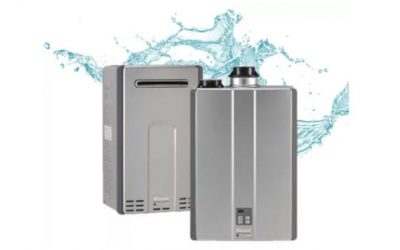A water heater is indeed an indispensable home appliance. Think of it. How many times do you jump into your bathroom for a long shower after a tedious day at work? Or, can your kitchen do without hot water? And we are not even mentioning the many instances you require hot water for laundry.
It, therefore, makes perfect sense to ensure that you heater stays in the best possible condition to provide you with hot water whenever you need it to. And we are not talking about water supply here. Rather, we want to focus on the water heater itself. More to the point, we will be putting the spotlight how to deal with an overheating system. The pointers below will help you to address the problem.
Contents
Check the Temperature Settings
This is a no-brainer, right? Sure, but not many homeowners are quick to suspect that the temperature settings could be the cause of overheating. You see, water heaters operate differently based on the model and the brand. Some units come with an integrated function that detects malfunctions (including overheating) and warns you before the anomaly escalate. Others, on the contrary, don’t have built-in safety features.
Whether or not your tankless heater can sound off an alarm in case of any problem, you should always keep an eye on the temperature setting. As a rule of thumb, your system’s thermostat ought to be at 110 to 125 degrees Fahrenheit when it is working optimally. At this range, the temperature of the water remains constant.
The thermostat, however, is not foolproof and may go beyond the set limits. When your system produces hot water all of a sudden, the first step to take is to check the temperature settings. At times, a simple adjustment of the thermostat is all you need to get the heater working as it should.
There’s no Problem with the Temperature Settings, What Next?
So, you’ve checked your heater’s thermostat and everything seems to work perfectly. However, your water is still hot. In such a scenario, the only other logical conclusion is that there’s every possibility your heating system has a mechanical breakdown. Theoretically, this means that you have to hire a professional to inspect it.
We should insist at this point that unless you know what you are doing, do not check the heating system yourself. Most manufactures may void the warranty if they discover that you tampered with the internal components of your heater even when you very well knew that you didn’t have the expert know how.
What Causes Overheating?
One of the reasons your system is likely to overheat is if there is a problem with the thermostat or elements. As you use your heater, elements accumulate sediment deposits which lead to calcification. The heater then resorts to using more power to heat the water. In other words, the unit overworks and eventually breaks down. When this happens, the water becomes too and continues to get hotter if you don’t correct the fault.
How Can You Prevent Overheating?
Decalcify and Clean Regularly
The surest way to maintain consistent water temperature is to wipe your heater’s element at least once every year. The idea here is to get rid of the of the sediments and other deposits. We suggest that you come up with a schedule and stick to it. Be sure to refer to your manual on how to decalcify the inner components.
You should also keep in mind that the thermostat is prone to tear and wear. While the best tankless water heater should provide you with years of service, it is also advisable that you replace the elements once in a while.
Inspect the Pressure and Temperature Release Valves
Check both the temperature and the pressure release valve on a regular basis to help you detect any potential problem before it deteriorates. Note that inspecting your water heater is essential. If you don’t check the heater for long, you may have to deal with a fatal explosion in the future. The point we are trying to make here is that you should do all you can to make sure that the heater is working correctly. Don’t wait until it starts to overheat to check it.
Clear the Discharge Pipers
Luckily you don’t need any special skills to do this. In fact, all you require to do is to lift up the supply lever for one or two seconds to allow the water to flush out the valve. The entire process shouldn’t last you more than a minute. However, if the residue or the drainage is taking longer, you should consider calling a plumber to check your hot water system.
The Bottom Line
State of the art water heaters don’t require a lot of work to keep them functioning properly. All most every other model we’ve featured in our tankless water heater reviews comes with a smart mechanism that warns you of the water temperature influx as soon as it happens. Others can adjust the temperature automatically depending on the water flow.
Even then, it doesn’t mean that you shouldn’t be inspecting your water heater regularly. On the contrary, you are better off inspecting the system once in a while to help avert possible problems. And as we’ve mentioned earlier on, always make sure that you seek the services of a professional plumber whenever you want to carry out maintenance procedures on your tankless water heater.
On top of that, make sure that you are using a water heater that has enough power to meet your hot water needs. Your heater will most likely cause problems if you use it to heat more water than it can handle. You should, therefore look at the water flow and the output versus what you require in your household before you can invest in any water heater. And, as we’ve explained above, after you’ve found the right one, your job is to make sure that you carry out regular maintenance procedures to prevent overheating.


